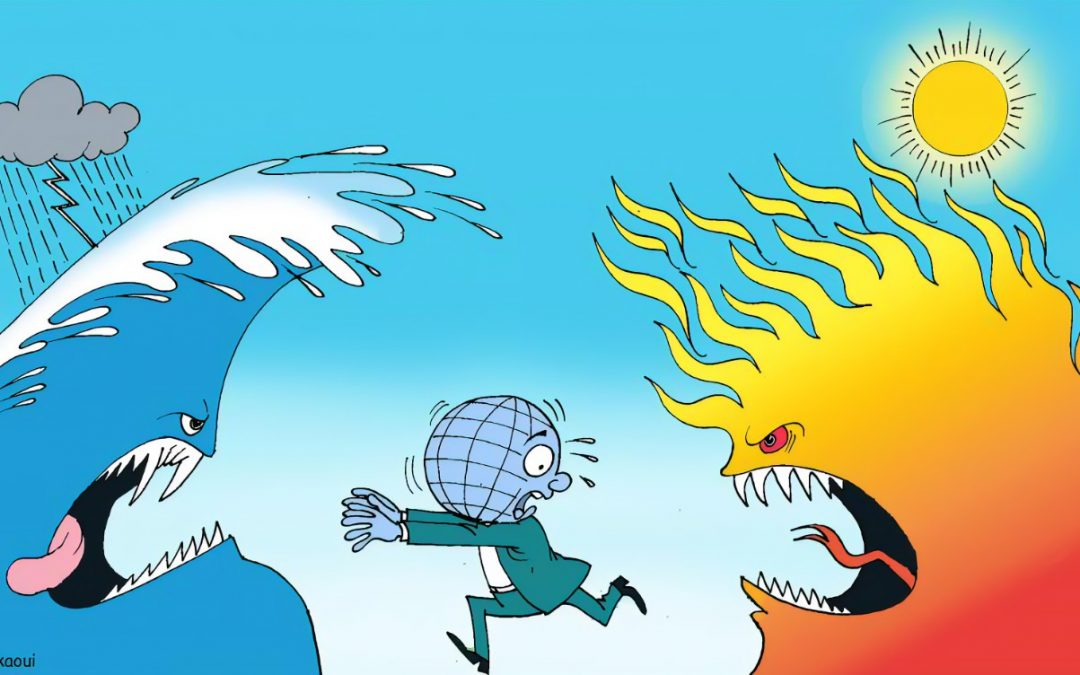
Impact of Lebanon’s Economic Collapse on the Lebanese Population
Featured Image Courtesy of: albawaba.com
- Contributors in Alphabetical Order:
- Nour El-Habhab
- Salem Grayzi
- Antoine Rahal
- Bahige Saab
- Ziad Shehab
- Mahmoud Yaghmour
Lebanon has been living one of the worst economic crises that a country has lived in the modern era. According to the World Bank , it is likely to rank among the top 10 most severe crises experienced globally since the 1850s. In this article, we will explore the impact of Lebanon’s economic collapse on the mental health of the Lebanese people, their productivity, and their forecasts of the country’s future. We will also try to discuss two potential measures that could mitigate its severe economic crisis.
The following graphs plotted in the dashboard were based on the UN World Indicators dataset. These graphs reflect the severity of the Lebanese collapse. The bar chart of Lebanon’s GDP per capital for the last ten years demonstrates that the country’s GDP has shrunk by 43% in two years only! To make things worse, the inflation rate line chart show that the country’s inflation rate has skyrocketed by 2724% in two years only! An item that cost 1000LBP in 2018 cost almost 27,240 LBP in 2020! For further details refer to the “Lebanon’s Economic Collapse in Numbers” dashboard.
These shocking numbers have motivated us to study the effect of the economic collapse on the Lebanese people’s mental health and productivity in addition to explore their insights about the future. Therefore, we designed a survey in which 370 people of different age and employment groups participated. The results were extremely alarming: 61% of the surveyed people said that their mental health was affected by the economic collapse while almost 60% of them revealed the negative impact of the crisis on their productivity. To make things worse, 69% of the respondents said that they wanted to leave Lebanon while 62% of them were pessimistic about the country’s future! Almost 1 in every 5 Lebanese said that there is no hope in Lebanon. On the other hand, almost half of the respondents said they would stay in Lebanon if the situation improved. The “Survey Dashboard” summarizes the survey’s results.
The Currency Board:
As Lebanon’s economy has been in crisis for almost two years now, ranked in possibly the top three most severe economic and financial crises since the nineteenth century, an ultimate solution does exist but is nearly impossible to achieve, replacing the ruling political parties. As ambitious young minds, we looked for practical solutions that we can possibly push for to help our country. A suggested solution from an economic perspective would be a currency board, a solution that has been implemented in countries that were facing a similar crisis to Lebanon such as Lithuania and Bolivia. A currency board is an entity separated from the central bank that is given the authority of managing the country’s currency reserves and fixing exchanges rates, it is regulated by law and not the government, hence limiting any pressure from political parties. Having a currency board would fix the inflation rate and trigger a domino effect on the economy by improving GDP, growth, and many other factors.
The “Currency Board Solution” dashboard below shows that there is a prompt decrease in the inflation rate after applying the currency board solution in the late 90s in Bulgaria, Estonia, and Lithuania, who’ve faced severe cases of hyperinflation just like Lebanon. Alongside the stability of the inflation rate over 20 years, GDP has shown a steady increase since the setup of the board as a result of inflation being stabilized. This shows how this solution has an immediate impact and could help Lebanon start the recovery process directly.
Obtaining then Commercializing IP to boost GDP:
Another solution for Lebanon’s current problem is obtaining then commercializing intellectual property; Given Lebanon’s rich human capital this seems like a reasonable solution. Also, by patenting Lebanon’s ideas, they can offset copycat competitors thus preserving Lebanon’s newly found income source, for a reasonable timeframe [till the patent expires]. Some of the metrics to measure a country’s participation in intellectual properties, at least from the World Bank World Development Indicator dataset are:
– Patent application, residents and Patent application, non-residents
o These were summed to a new metric: Patent Applications, Total
– Industrial design applications, resident by count and Industrial design applications, nonresident by count
o These too were summed to a new metric: Industrial design applications (Total)
– Trademark applications total
o No summing of several metrics was needed here
Besides generating high-value, and off-setting copycat competitors, plenty of the high-value wages in many fields are not energy-intensive; for instance, consider the designers of the iPhone package boxes at the Apple headquarters; these box designers literally sit in a room designing carton boxes, and these designers make more money than the overseas employees working in the energy-intensive factory manufacturing these boxes. This is a model that Lebanon who has high creativity but is experiencing an energy shortage can pursue.
And as the “Potential Solution: Patenting” dashboard demonstrates, we’re able to see that these three Intellectual property metrics are positively-correlated with GDP – so it is something that we believe Lebanon as a society should consider as a route to follow.
Conclusion:
To conclude, it is true that Lebanon’s economic crisis has merged us into a dark tunnel from which it is not easy to get out of. However, with conscientious diligent ethical work, we can accelerate the recovery process. At the end, it is in our hands to decide whether we shall stay this obscure tunnel for a long time or encounter the light of salvation at its end as fast as possible.






